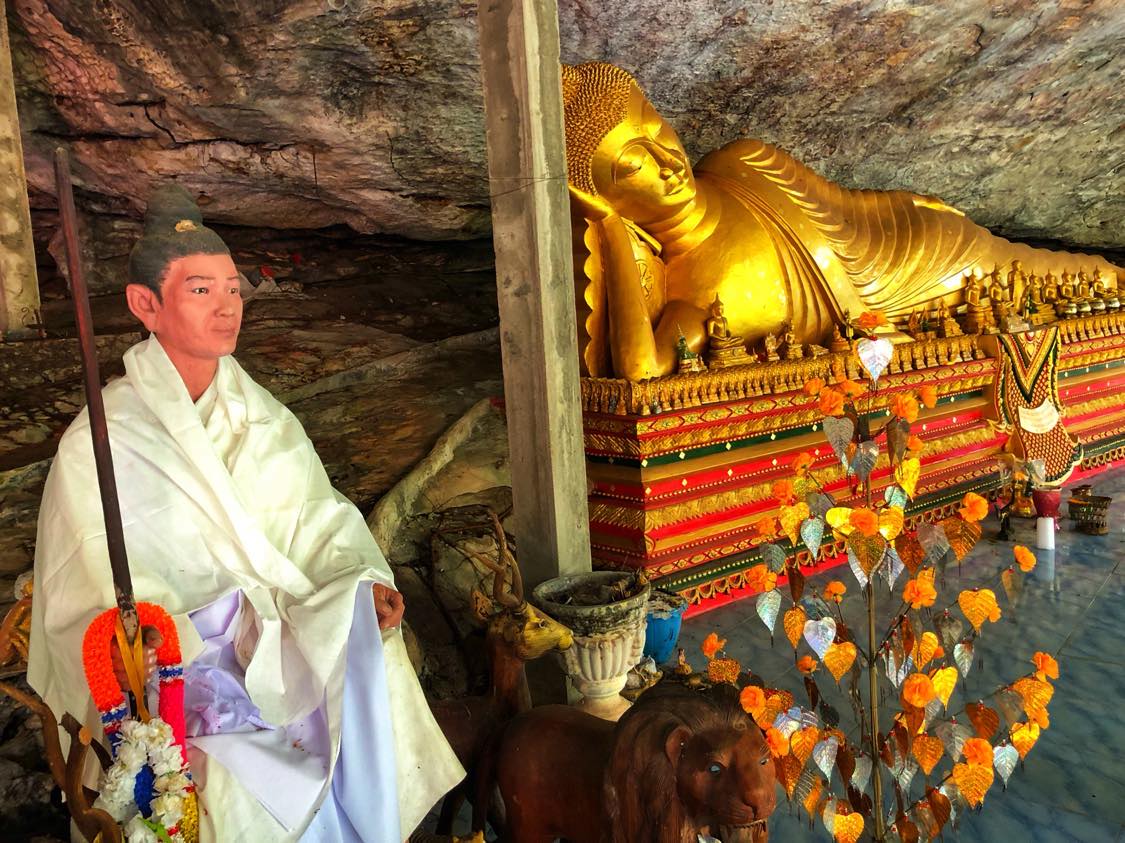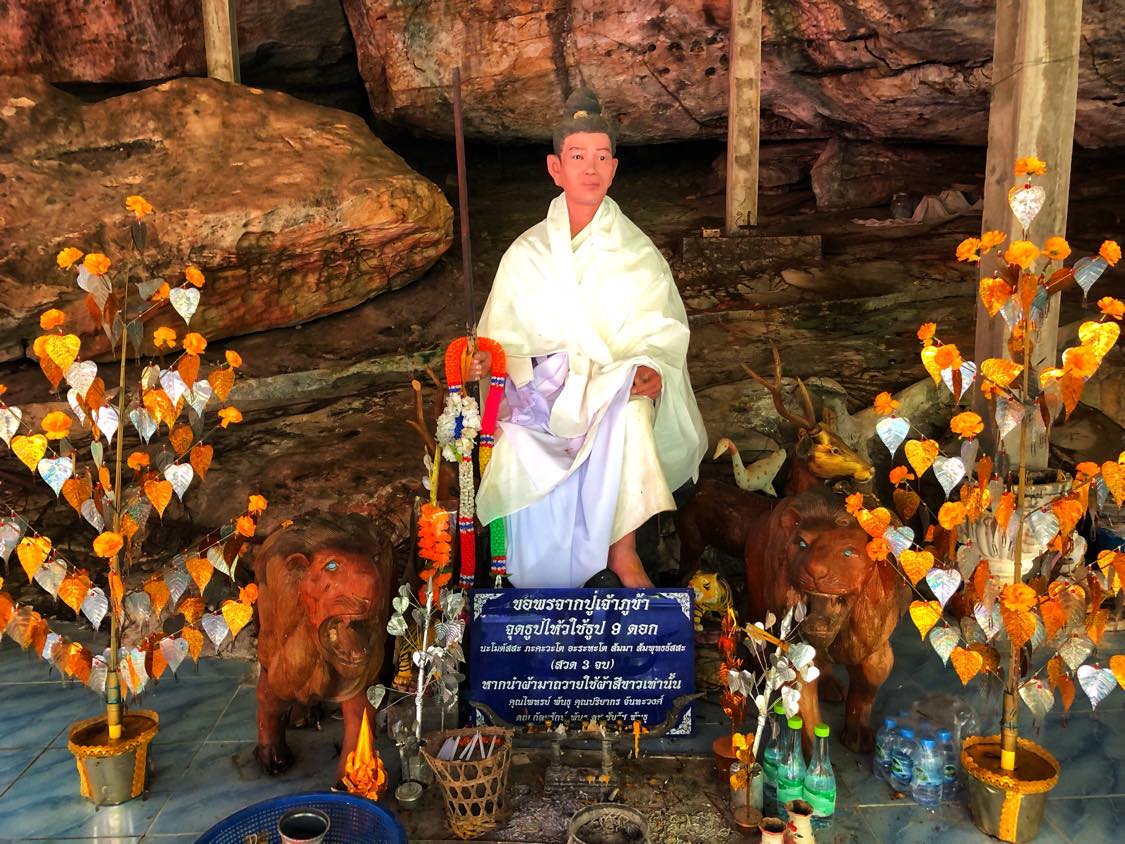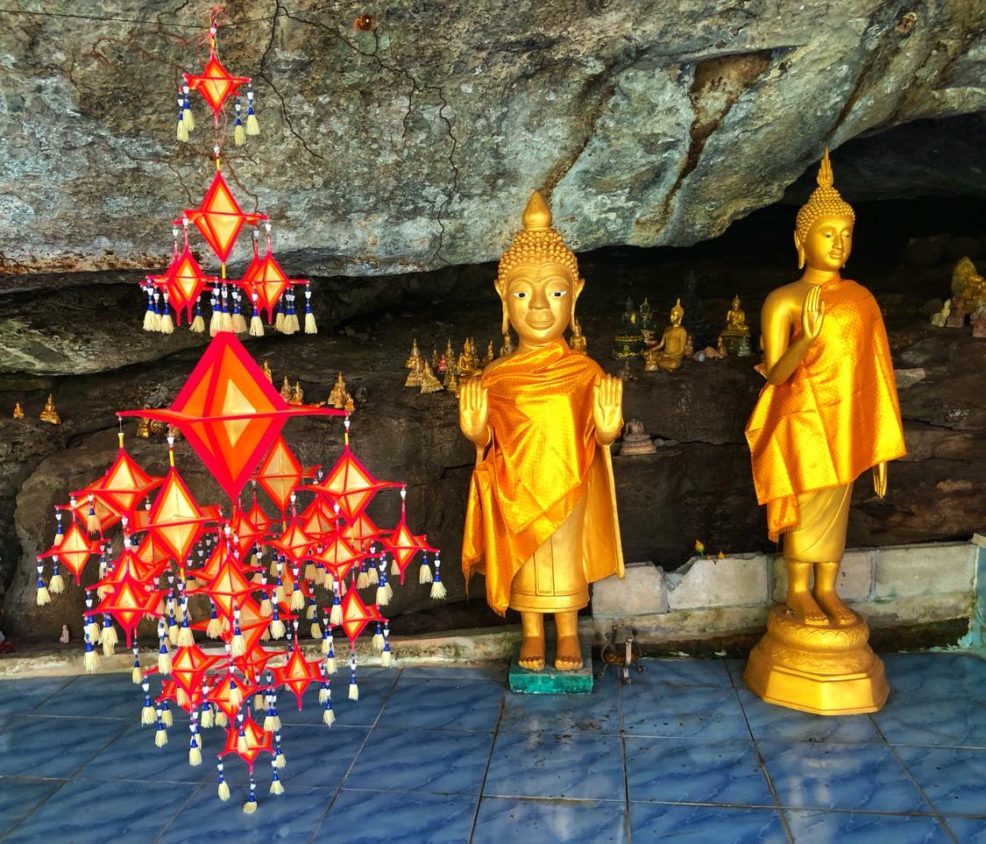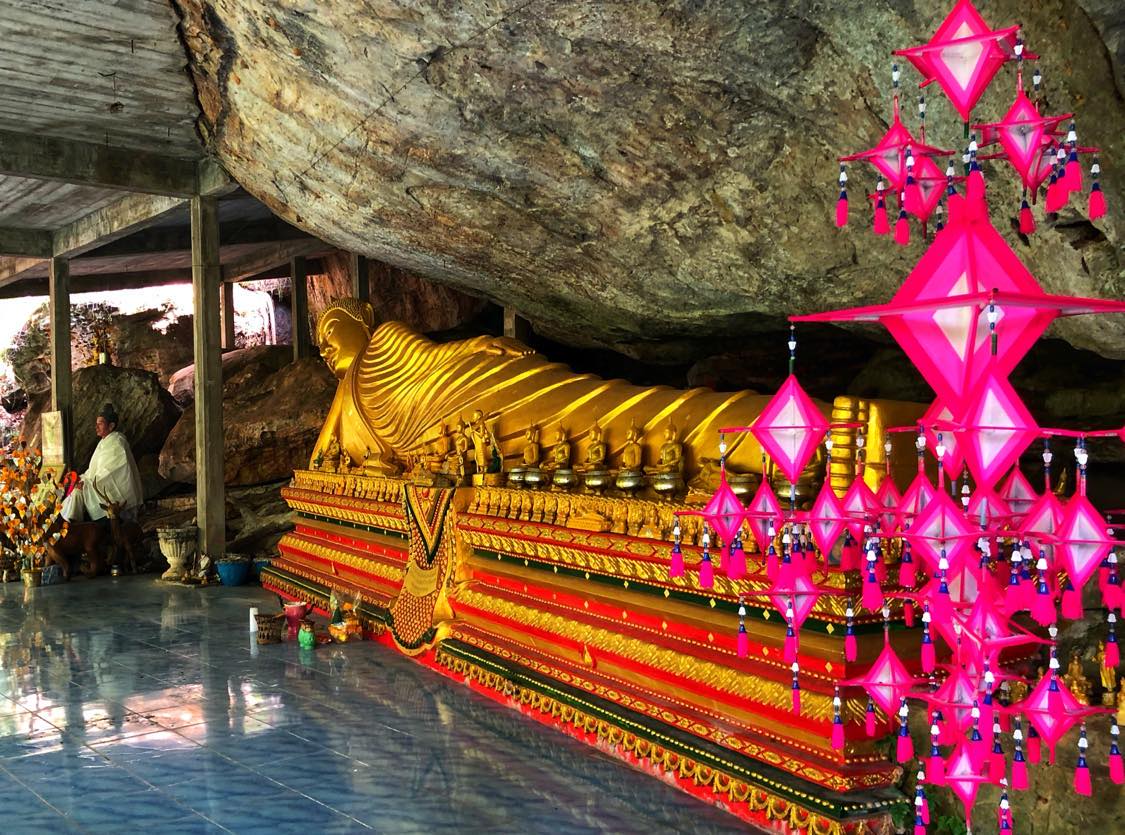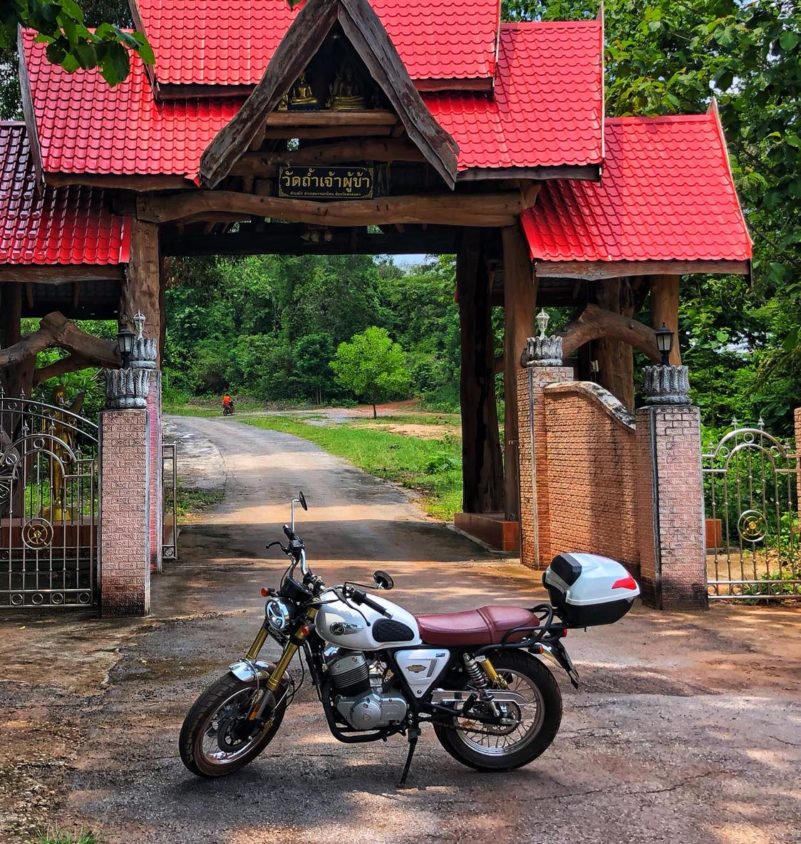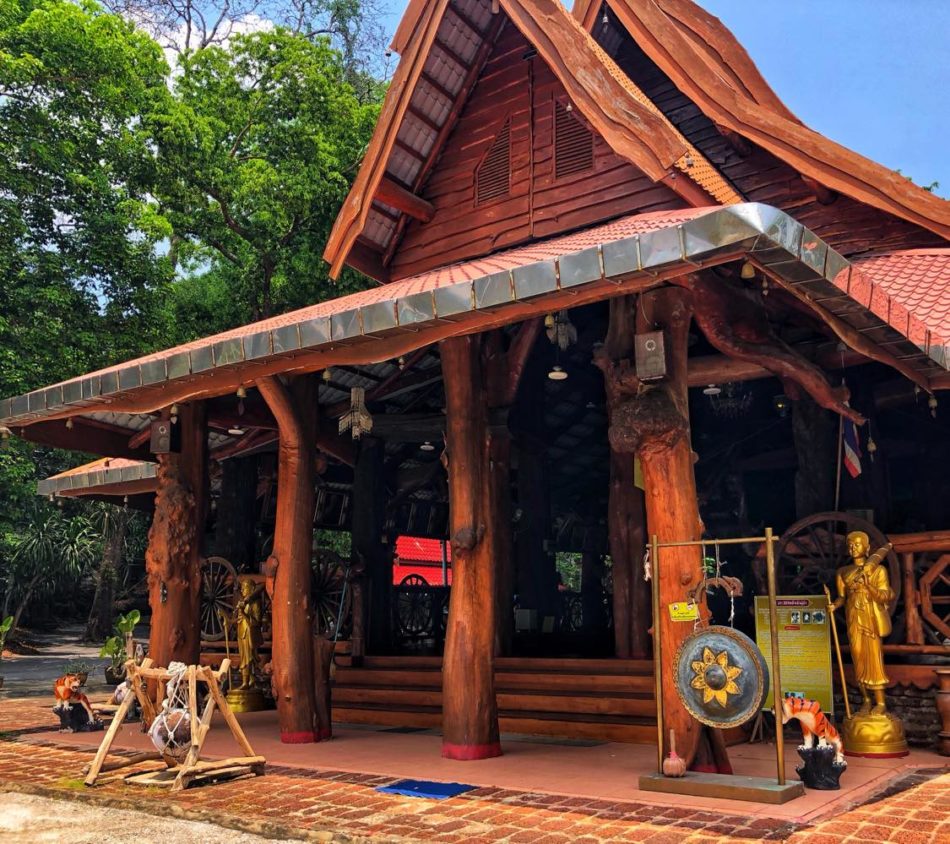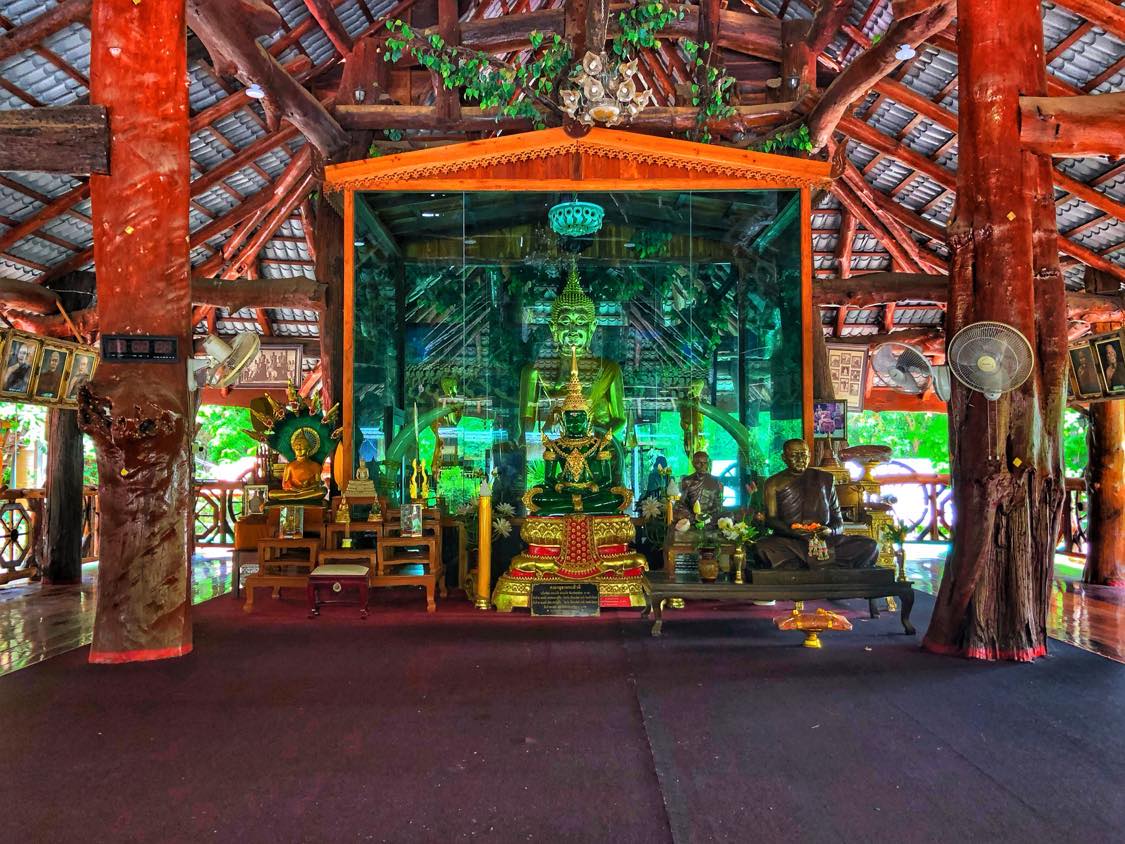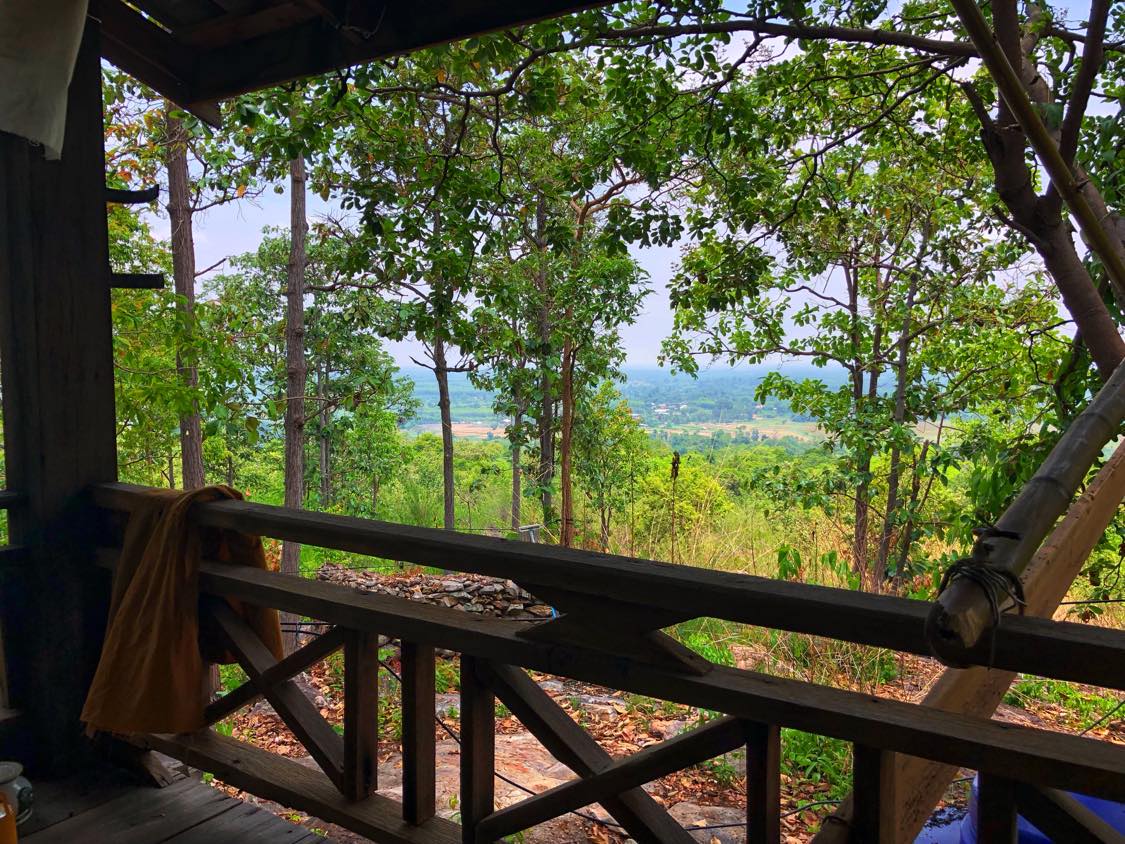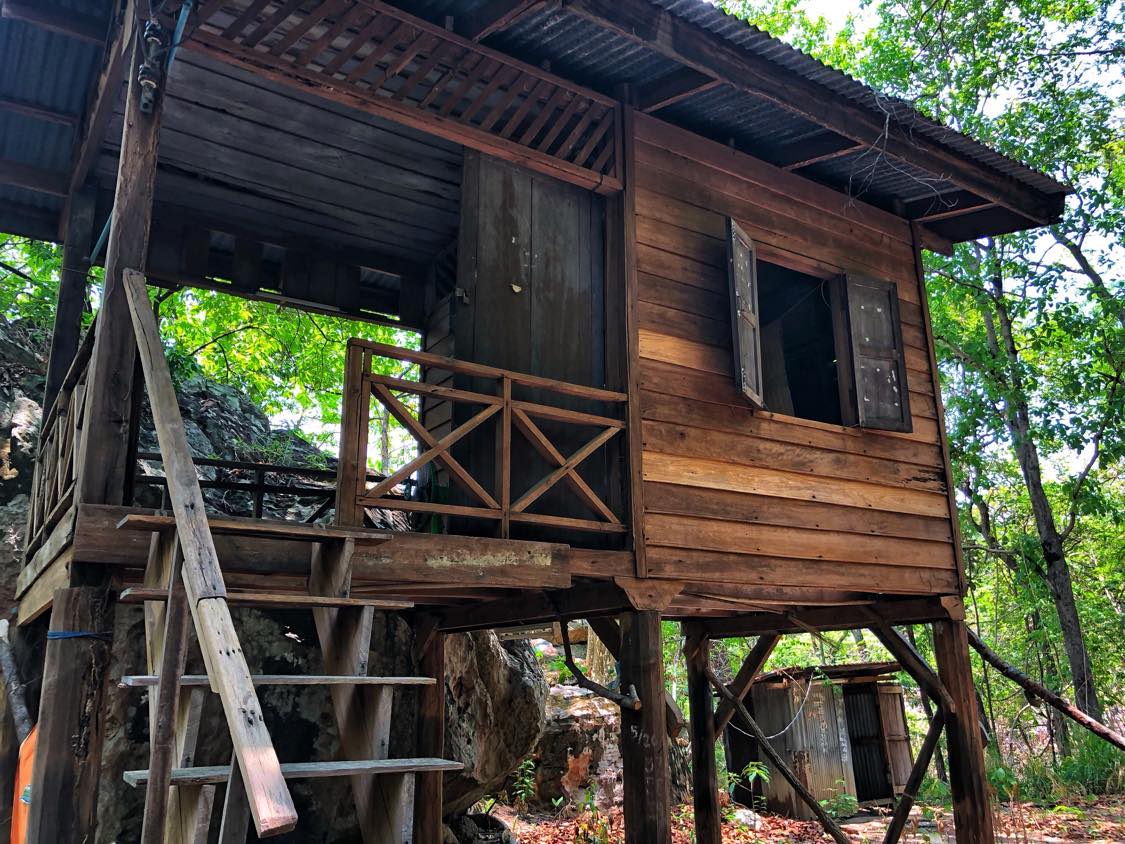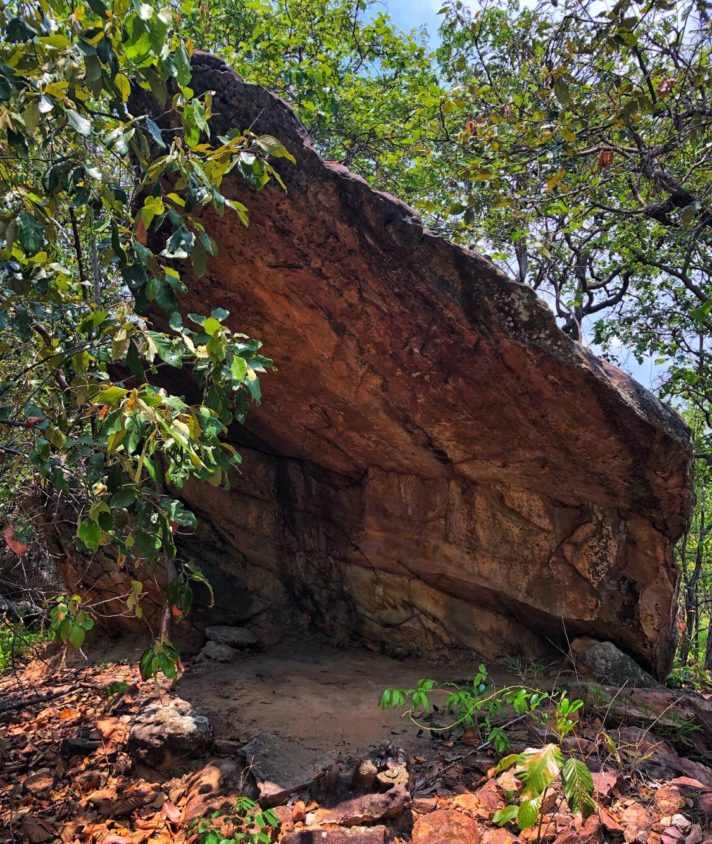Description
Wat Tham Chao Phu Kha (วัดถ้ำเจ้าภูข้า) is a forest cave temple located on a small mountain in the Phanna Nikhom district of Sakon Nakhon. Nearby temples include Wat Phu Hin Pun, which was the home of revered Thai monk Luang Pu Phang Kosalo (หลวงปู่ผางโกสโล), and Wat Bo Kaeo Manichot, which has a beautiful Chedi containing relics of Ajarn Phang.
Wat Tham Chao Phu Kha translates to The Temple of Lord Phu Kha. The name "Phu Kha" doesn't come from Thai but from the Phu Thai tribal language and means something similar to "I am," which curiously is what the Hebrew God Yahweh's name means.
Over 100 years ago, there were monks in this area of Sakon Nakhon who were ordained in white robes. The most famous of these monks was "Phu Kha," who became a vegetarian after he heard snails shout "Help me! It's hot! It's hot!" when they were getting boiled for dinner. He lived and meditated in this mountain cave, and after his death a temple was eventually built on the surrounding grounds.
To arrive at the temple, you pass under a beautiful wooden archway with gold Buddhas in the corners, and then go up a short distance to the temple grounds. There is a gorgeous teak pavilion (Ubosot) with a platform that holds the temple's primary Buddha statues.
You'll notice on the platform that it says: ห้าม สุภาพสตรี ขึ้น (hâam sù-pâap sàt-dtree kêun). This means that women are not allowed to step up upon the platform with these important Buddha statues. This is related to the prohibition that forbids Thai monks from touching women, and shouldn't be taken the wrong way by foreign tourists with different sensibilities about such matters.
Note that the sign uses the words sù-pâap sàt-dtree (สุภาพสตรี) to refer to a woman, which is the most polite way in the Thai language to refer to a lady. In ordinary conversation, the most common Thai word used to refer to a woman is phôo yĭng (ผู้หญิง). The fact that the sign uses the words sù-pâap sàt-dtree demonstrates respect for ladies visiting the temple.
Behind and to the right of the beautiful teak pavilion is a pathway that leads to the old cave, which now houses statues of Chao Phu Kha (or Jao Phoo Khah) and a large, gold Reclining Buddha. To the left of the pavilion there is a wooden congregation hall where the monks welcome visitors in the morning and eat their breakfasts.
Behind the congregation hall (or Viharn) is a pathway that leads up the mountain to the monks residences, which consist of wooden Kutis that are around 70 years old, and stretch back to the beginnings of the temple building in 1946. There are also meditation spots for the monks, including a large stone outcropping that protects the monks from sun ar rain during their meditations.
Famous Thai monks who have stayed at Wat Tham Chao Phu Kha include Phra Ajarn Ku Dhammatinno (พระอาจารย์กู่ ธัมมทินโน) and Luang Pu Louis Chanthasaro (หลวงปู่หลุย จันทสาโร), whose life is honored with a museum at Wat Pa Suttawat in Sakon Nakhon city.
The current abbot of Wat Tham Chao Phu Kha (วัดถ้ำเจ้าภูข้า) is Luang Pu Kaew Sujinno (หลวงปู่แก้ว สุจินโณ), who was responsible for directing the construction of the temple's gorgeous teak Ubosot, which was built with wood donations from villagers in 2015. To view more photos, visit our Wat Tham Chao Phu Kha Photo Gallery.

